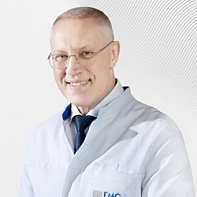When breast reconstructive surgery is possible
Breast cancer is the most common malignant disease in women, which also ranks first in terms of mortality[1]. The main method of breast cancer treatment is surgical. In the early stages of the disease, organ-preserving surgery methods (sectoral resection, lumpectomy) are preferred. However, doctors often have to perform a radical breast removal operation, mastectomy, to avoid recurrence.
Although this operation leaves a serious visual defect, effective breast reconstruction methods have been developed today. In modern oncology departments, mastectomy planning is carried out jointly with plastic surgeons, and the possibility of breast reconstruction is immediately assessed. Currently, oncologists have many surgical management options for patients with breast cancer in their arsenal. High-quality breast reconstruction is possible in almost any patient.
Breast reconstruction techniques
The method of reconstructive breast plastic surgery depends primarily on the type of surgery performed.
- Breast volume and shape restoration with the help of an endoprosthesis, a silicone implant, is possible only with a skin—preserving mastectomy. In such an operation, the surgeon preserves the skin "cover" of the breast, but completely removes all the glandular breast tissue and the nipple-alveolar complex[2]. Subcutaneous mastectomy is also possible in some patients to preserve the nipple. Skin-preserving surgery places special demands on the surgeon's qualifications, since to reduce the risk of recurrence, he needs to remove the gland tissue as thoroughly as possible.
- Breast reconstruction with the use of flap plastic surgery is performed if a simple mastectomy has been performed — complete removal of breast tissue. In this case, skin and muscle flaps are used for tissue reconstruction, which are transferred to the target area from the abdomen or back. If necessary, the technique can be combined with the installation of an implant.
According to the timing, breast reconstruction can be simultaneous or delayed.
- One-time. During subcutaneous mastectomy, the implant is placed under the skin at the site of the excised glandular tissue as part of the same operation. This saves the patient from having to undergo a separate plastic surgery and the recovery process after surgery. Modern studies show that skin-preserving mastectomy with simultaneous breast reconstruction with an implant does not increase the incidence of postoperative complications[3].
- Delayed.This method has to be resorted to if the patient needs radiotherapy. Radiation can worsen the results of previously performed reconstructive plastic surgery. In addition, the doctor may recommend postponing the operation if he assumes that in the future the breast will drop, which will lead to flap displacement.
Reconstructive surgeries can be performed in one or two stages. In the two-stage procedure, the first stage uses resistance bands to stretch the tissues. In the future, to replenish the volume, the expander is replaced with an implant or its own adipose tissue.
Thanks to the wide range of implant modifications, a good visual result is achieved after surgery and it is possible to restore the full symmetry of the mammary glands. At the last stage, for maximum aesthetics, the plastic surgeon restores the nipple. For this, a three-pronged method from breast tissue can be used, which gives excellent results. For the most natural appearance, the areola is tattooed after the operation.
Contraindications for breast reconstructive surgery
Contraindications for surgical breast reconstruction can only be serious diseases[5]:
-
severe pathology of the respiratory or cardiovascular system;
-
connective tissue dysplasia syndrome;
-
previous surgeries that could impair the blood supply to the donor flap;
-
decompensated chronic diseases (for example, diabetes mellitus);
-
autoimmune pathologies.
Rehabilitation after surgery
For more effective tissue repair after surgery, the patient is recommended to:
-
Wear compression underwear at all times during the period specified by the doctor.;
-
follow the doctor's recommendations to reduce puffiness (sleeping on your back in an elevated position, etc.);
-
to abandon thermal procedures (baths, baths, saunas), visits to the pool;
-
refrain from intense physical activity.
Depending on the method of reconstructive plastic surgery, full recovery can take up to 5-6 months or even more.
Modern standards of medical services, along with the treatment of the underlying disease, require maintaining a high quality of life for the patient and his psycho-emotional comfort. Reconstructive breast plastic surgery will allow you to completely get rid of the visual defect due to mastectomy. Make an appointment for a consultation with EMC specialists by phone +7 499 490-91-42.
List of sources and literature:
- Clinical Recommendations— Breast Cancer— 2021-2022-2023 (01/20/2023)- Approved by the Ministry of Health of the Russian Federation.
- Terkulov Azamat Aliyevich, Devlikanova Elena Enverovna, Kolesnikov Vladimir Evgenievich. Mammoplasty: from reconstructive to aesthetic surgery // Avicenna Bulletin.2022. No.4.
- Shidakova F.H., Sobolevsky V.A., DokolinR.M., Kurbanova M.B. Comparative analysis of the complication rate in single- and two-stage breast reconstruction after subcutaneous/skin-preserving implant mastectomy in combination with radiation therapy // Tumors of the female reproductive system. 2023. № 2.
- Regan JP, Casaubon JT. Breast Reconstruction. [Updated 2023 Jul 23]. In: StatPearls [Internet]. Treasure Island (FL): StatPearls Publishing; 2024 Jan-.








.jpg)
